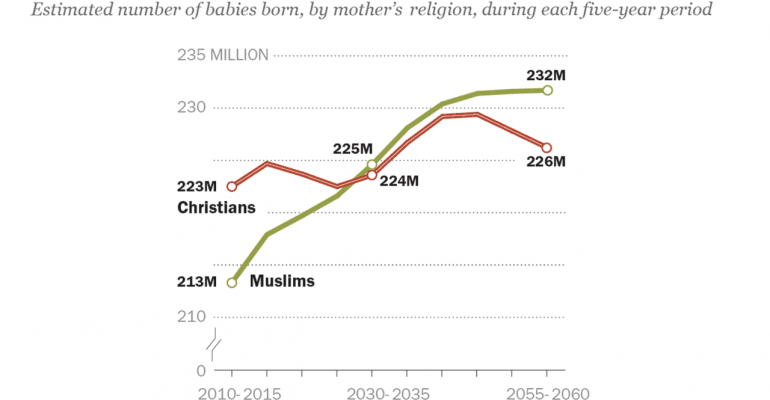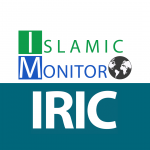The Changing Global Religious Landscape
April 5, 2017 2023-08-25 13:23The Changing Global Religious Landscape

The Changing Global Religious Landscape
More babies were born to Christian mothers than to members of any other religion in recent years, reflecting Christianity’s continued status as the world’s largest religious group. But this is unlikely to be the case for much longer: Less than 20 years from now, the number of babies born to Muslims is expected to modestly exceed births to Christians, according to new Pew Research Center demographic estimates.
Muslims are projected to be the world’s fastest-growing major religious group in the decades ahead, as Pew Research Center has explained, and signs of this rapid growth already are visible. In the period between 2010 and 2015, births to Muslims made up an estimated 31% of all babies born around the world – far exceeding the Muslim share of people of all ages in 2015 (24%).
The world’s Christian population also has continued to grow, but more modestly. In recent years, 33% of the world’s babies were born to Christians, which is slightly greater than the Christian share of the world’s population in 2015 (31%).
While the relatively young Christian population of a region like sub-Saharan Africa is projected to grow in the decades ahead, the same cannot be said for Christian populations everywhere. Indeed, in recent years, Christians have had a disproportionately large share of the world’s deaths (37%) – in large part because of the relatively advanced age of Christian populations in some places. This is especially true in Europe, where the number of deaths already is estimated to exceed the number of births among Christians. In Germany alone, for example, there were an estimated 1.4 million more Christian deaths than births between 2010 and 2015, a pattern that is expected to continue across much of Europe in the decades ahead.
The phrase “babies born to Christians” and “Christian births” are used interchangeably in this report to refer to live births to Christian mothers. Parallel language is used for other religious groups (e.g., babies born to Muslims, Muslim births). This report generally avoids the terms “Christian babies” or “Muslim babies” because that wording could suggest children take on a religion at birth.
The assumption in these estimates and projections is that children tend to inherit their mother’s religious identity (or lack thereof) until young adulthood, when some choose to switch their religious identity. The projection models in this report take into account estimated rates of religious switching (or conversion) into and out of major religious groups in the 70 countries for which such data are available.
Globally, the relatively young population and high fertility rates of Muslims lead to a projection that between 2030 and 2035, there will be slightly more babies born to Muslims (225 million) than to Christians (224 million), even though the total Christian population will still be larger. By the 2055 to 2060 period, the birth gap between the two groups is expected to approach 6 million (232 million births among Muslims vs. 226 million births among Christians).
Continue reading at: Pew Research Center








